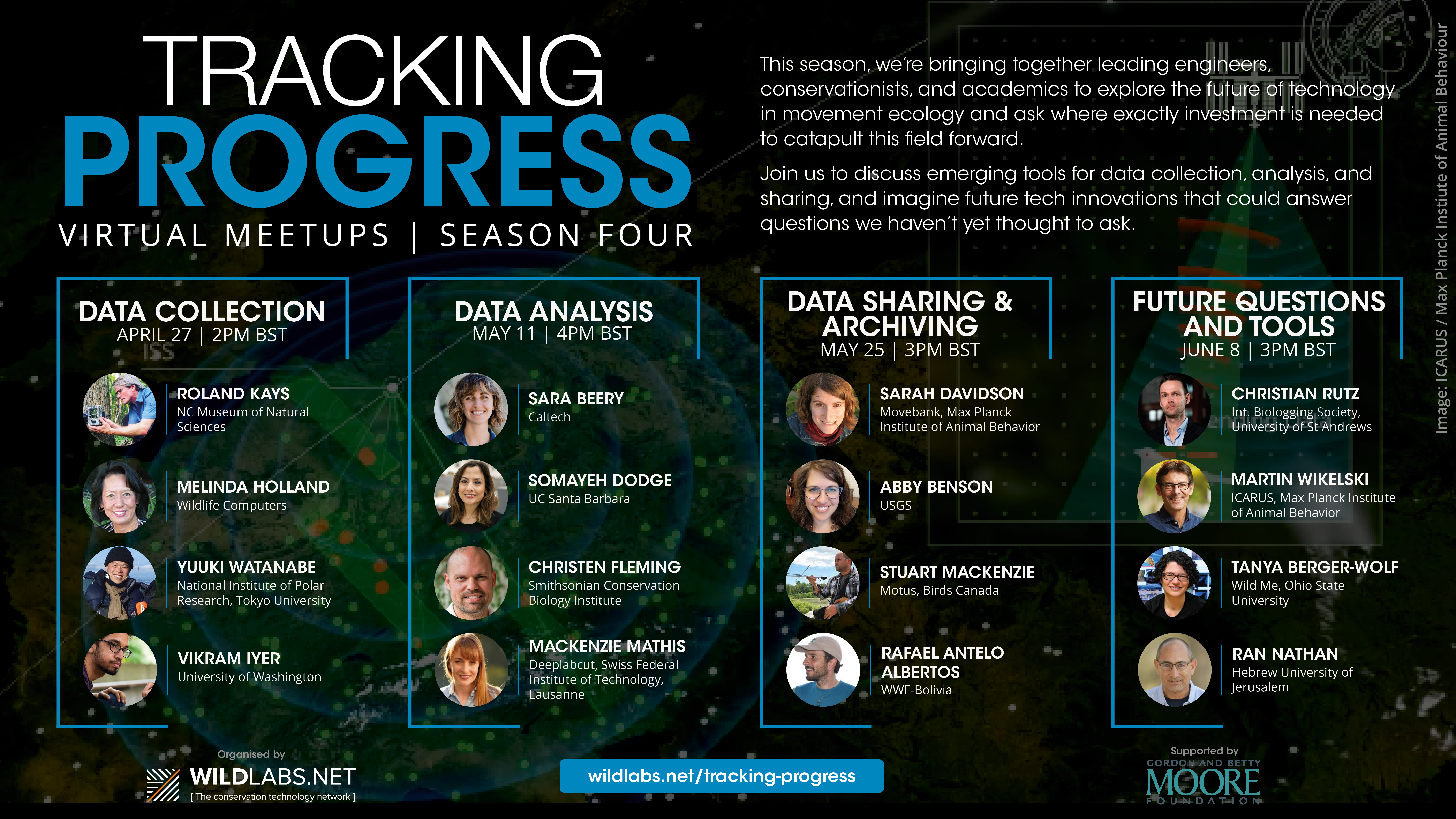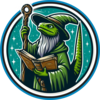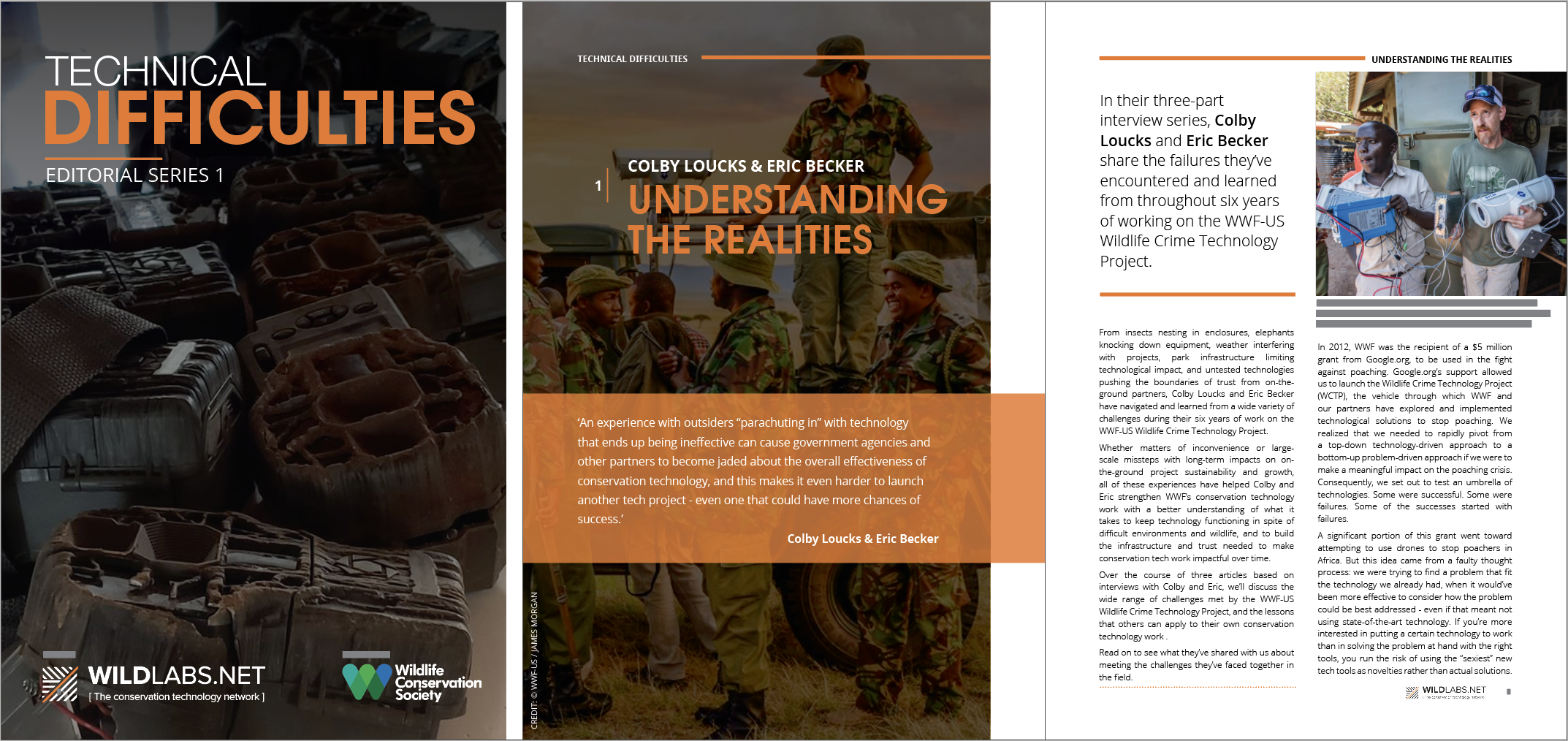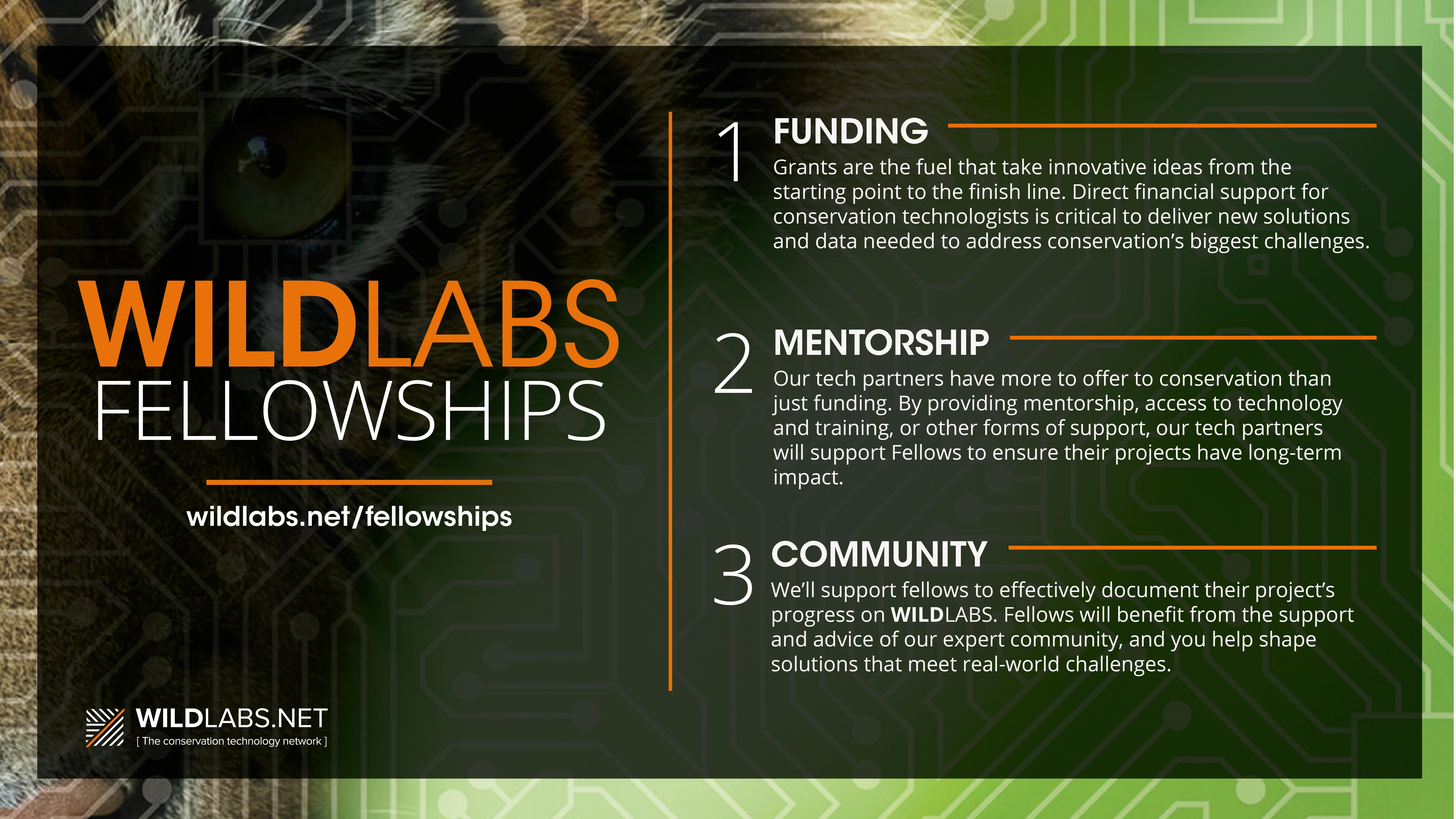Welcome to WILDLABS! Whether you’re a familiar member or brand-new in our community, the newly updated WILDLABS Platform has given us a great chance to introduce you to all the ways you can get involved in the conservation tech space.
This guide will help you get the most of WILDLABS and our ever-growing range of resources, events, opportunities, and of course, our global community of conservation tech users, makers, and supporters.
First Steps in the WILDLABS Community
Our WILDLABS platform is brand-new, but its updated and improved features are all based on the tried-and-true things we know work best for our community, and the needs you’ve all helped us uncover through the years.
Our community is the core of WILDLABS, and we want to help you to make connections, start collaborations, and share ideas and resources with each other. You’ll get the most out of our member directory by filling out your profile with a nice photo, a brief intro letting others know what you do and why you're here, and links to your socials and projects. This will let other members find you for future opportunities and questions, and help us understand what resources and content will be interesting and helpful for you! The member directory will also help you find people working on every continent around the world, and with any tech tool or species that you can think of.
If you’re new to WILDLABS, the best way to get started in our community is simply by creating your profile and jumping right in to interacting with people and content you find interesting. The more effort you put into exploring WILDLABS, building your profile, and finding places where your expertise fits, the more you’ll get in return! If you get stuck in any of these first steps, remember our team is always here to help.
Once you’ve created your profile, joining Groups will help you immediately find others in the community who are working with similar technologies and aligned projects. In these groups, you’ll be able to ask questions, share resources, help other members with their questions, start collaborations, and engage in insightful conversations. And one of the exciting new features is the ability to share questions and resources across multiple groups at once, a significant improvement that recognizes how so many complex conservation tech projects involve multiple tools requiring different types of expertise.

Another great new feature is the ability for community members to share their own articles, resources, opportunities, and events with groups, helping you reach the right audience easily.
If you're looking for a first point of call in our community, stop by our Welcome to WILDLABS thread in the Community Base. It's the best place to introduce yourself directly to our members and find out who else is in the community! The WILDLABS Community Base group is your space to get acquainted with all that our platform and community have to offer, and you can always check in there to see announcements, news, and community-wide resources.
Next, saving Collections related to your favorite conservation tech topics and groups will help you stay up-to-date on the latest relevant resources and news. You can create your own personal collections as well, allowing you to keep track of your favorite WILDLABS content and conversations, and share your curated resources with others. To start a collection of your own, simply click the bookmark tab on any content you'd like to save.
 Looking for a quick way to explore what’s happening in the community? The Feed tab is where you can get a global overview of our community platform follow along with everything that drives your WILDLABS experience, from collections to discussion threads to events, and much more!
Looking for a quick way to explore what’s happening in the community? The Feed tab is where you can get a global overview of our community platform follow along with everything that drives your WILDLABS experience, from collections to discussion threads to events, and much more!
The global #Tech4Wildlife community is also very active on Twitter, where our community regularly shares field photos, resources, events, job postings, and questions. You can follow us @WILDLABSNET.
Lastly, our Community Digest also offers members a fortnightly at-a-glance review of the best conversations, opportunities, and resources happening on WILDLABS. Make sure you're subscribed to our mailing list to stay on top of the latest community news, features, interviews, opportunities, and announcements.
Finding Your Groups
As mentioned above, joining Groups is an important part of the WILDLABS experience. The conversations in these groups could spark a new idea, allow you to make a great connection to someone whose experience complements yours, and contribute your own knowledge. Our groups are mostly organized by areas of technological interest - for example, our Acoustic Monitoring, Camera Traps, and Biologging groups, among many others! But you'll also find groups focused on specific challenges like Climate Change and Wildlife Crime, along with open spaces to discuss broad topics like Emerging Tech, and groups like Early Career to help you network and connect with similar members.
Once you’ve become a member of a WILDLABS group, you’ll be part of a community of people who can relate to why your projects and expertise matter, and help you make the most of your ideas. Joining groups is how you curate your personal feed (underneath the feed tab) -
While you’ll surely find the best fit for your expertise somewhere within our Groups tab, every WILDLABS group is open to everyone, regardless of your skill level or previous experience with conservation tech; in fact, we encourage you to check out areas you’re less familiar with and expand your #tech4wildlife horizons!
How are you using #Tech4Wildlife?
Speaking of #Tech4Wildlife, have you heard about our annual photo challenge? Each year, we ask users of conservation tech to share photos on Twitter of how they use tech in the field and the lab, using the #Tech4Wildlife hashtag. This is your chance to show the diverse, innovative ways you are using or developing tech for wildlife conservation.

A picture says a thousand words, so to get a taste of all the ways tech can help with wildlife conservation check out the incredible projects shared in the #tech4wildlife photo challenge feed.
Our #Tech4Wildlife Photo Wall is a great way to get up to speed with the incredible projects happening throughout our community. Over the past five years, we've seen proximity loggers on Tasmanian Devils in Australia, tags on endangered minke whales in Antarctica, tiny tags tracking desert bats in Kenya, acoustic tracking of endangered hawksbill sea turtles in Ecuador, camera traps watching snow leopards in Mongolia, 3D cameras mounted on drones filming river dolphins in the Amazon, and camera traps capturing Jaguar in Bolivia. So we want to know, how are you using #Tech4Wildlife?
Learning with WILDLABS
Our community brings together members of all skill levels, and we have virtual events, case studies, and other resources to help you at any stage.
Our Virtual Meetup series brings together experts for insightful discussions on conservation technology’s biggest developments. Our 2022 season is kicking off Tracking Progress, a new WILDLABS research project supported by the Moore Foundation’s Science Program and an advisory committee of movement ecology experts. In this project, we aim to harness the collective expertise of the global WILDLABS community through expertly facilitated virtual meetups and focus group discussions to conduct the first global horizon scan of tech in movement ecology. By opening up discussions on emerging tools for movement data collection, analysis, and sharing, and by imagining future tech innovations that could answer questions we haven’t yet thought to ask, participants will play a role in moving this field forward.

In addition to our 2022 Virtual Meetups season, all three archived seasons of this series will give you a great overview of what’s happening in our community, and the future directions of conservation tech research and fieldwork. Watch previous episodes here on Youtube.
If you’re just learning about the possibilities of conservation technology, or exploring new ways to incorporate it into your work, you’ll want to check out our Tech Tutors series, which answers the “How do I do that?” questions from our community through quick tutorials and live Q&A sessions! The first three seasons have covered topics like getting started with machine learning, choosing the right camera traps, collaborating on conservation tech projects, considering ethics in your work, using tools like Megadetector and Wildlife Insights, and more. You can also find all three seasons on our Youtube channel.
And in 2020, we introduced a hands-on way to learn about conservation tech with our first virtual course, Build Your Own Data Logger. This interactive and comprehensive program that guides you through every step of building and deploying custom hardware using the Arduino platform is now available on WILDLABS and on Youtube.
Sharing Experiences with WILDLABS
One of the biggest changes to the WILDLABS platform is the new ability for you to share your expertise and experiences directly with other members in community-sourced content and conversations. Whether you want to write a case study, article, or project update, share a great conservation tech opportunity, or start a new discussion in a group, you'll be able to get started simply by clicking the Post button in the panel up top. Our new editorial guidelines will be updated shortly to help you create great content to share with community members around the world. Until then, explore our Resources section to see what kinds of content you can post to WILDLABS!
We're so excited to see what stories our community shares on our new platform. Likewise, we're excited to expand our own editorial content to showcase even more voices and experiences through insightful pieces that resonate with our community's interests, discussions, and needs. Our case studies and interviews will allow you to learn directly from other conservation tech users and makers, while thematic series like our Technical Difficulties Editorial Series delve deeper into important discussions that impact our community on a larger level.
You can also get an overview of our community's work in our Annual Reports, found here.
Interested in learning more about the WILDLABS Editorial Team? Contact [email protected].
Finding Support on WILDLABS
Our platform and programmes have multiple ways to engage with experts and get the support and resources you need in order to make your conservation tech projects successful!
Our Groups are of course a great starting point for any questions; in fact, the conversations within our forums can even lead to real-world collaborations! When you need advice or a nudge in the right direction, make our Groups your first stop.
For more in-depth advice, programmes like AI for Conservation Office Hours can connect you to tech experts for one-on-one advice, helping you overcome the most immediate technical challenges of your projects.
And through our new Fellowship Programme, launched in 2021 with our first fellowship partners at Edge Impulse, WILDLABS is designing new ways to match tech industry experts with conservationists who can put their tools to great use. With a unique blend of funding, mentorship, and access to the global WILDLABS network, we're excited to see how our Fellowships will lead to new innovations and impactful solutions.
Need Help?
The WILDLABS platform is constantly growing and changing, and we know there’s a lot of information to take in! Use this thread in the Community Base to ask questions about navigating the platform, and send your questions about connecting with other members, getting involved in virtual programs, or sharing content to [email protected].
See you in the community!








Add the first post in this thread.